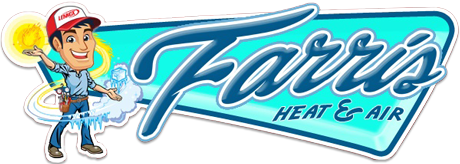As the weather begins to cool off, you might be concerned about how you’ll prepare your heating and cooling. After all, HVAC bills routinely contribute a big chunk of your monthly electric bill. To try and find ways to lower their HVAC bill, some owners look closely at their thermostat. Could there be a setting they can use to increase efficiency?
The bulk of thermostats include both a ‘Fan’ or ‘Fan On’ setting. But if the fan is on during a typical cycle, what can the fan setting provide for the HVAC system? This guide can help. We’ll review precisely what the fan setting is and whether you can use it to save money during the summer or winter.
Should I Use My Thermostat’s Fan Setting?
For most thermostats, the fan setting means that the HVAC blower fan remains on. A few furnaces will run at a low level with this setting, but in general heating or cooling isn’t being made. The ‘Auto’ setting, conversely, will turn on the fan during a heating or cooling cycle and switch it off when the cycle is complete.
There are benefits and drawbacks to using the fan setting on your thermostat, and whether you do or don’t {will|can|should]] depend on your personal comfort needs.
Advantages to using the Fan/On setting:
- You can keep the temperature in every room more balanced by permitting the fan to keep generating airflow.
- Indoor air quality will be highest because steady airflow will keep passing airborne contaminants into the air filter.
- Fewer start-stop cycles for the HVAC fan helps lengthen its life span. As the air handler is usually a component of the furnace, this means you might minimize the risk of needing furnace repair.
Disadvantages to using the Fan/On setting:
- A nonstop fan could raise your energy bills somewhat.
- Continuous airflow can clog your air filter up more quickly, increasing the frequency you’ll need to replace it.
Which Setting for My Thermostat? Fan or Auto in Summer/Winter
In the summer, warm air can persist in unfinished spaces including the attic or an attached garage. If you leave the fan on, your HVAC system might gradually move this warm air into the rest of your home, forcing the HVAC system to run longer to maintain the set temperature. In extreme heat, this may lead to needing AC repair more often as wear and tear grows.
The opposite can take place over the winter. Cooler spaces like a basement will hold onto cooler air, which can eventually drift into the rest of your home. Keeping the fan on will sometimes pull more cold air upward, increasing the amount of heating you need to remain warm.
If you’re still trying to figure out if you should switch to the fan/on setting, don’t forget that every home and family’s comfort needs are different. Leaving the HVAC system’s fan on could be best for you if:
Someone in your household has allergies. Allergies and other respiratory conditions can be hard on the family. Leaving the fan on should help to improve indoor air quality, helping your family breathe easier.
Your home experiences hot and cold spots. Many homes wrestle with stubborn hot and cold spots that quickly return to a temperature different from the rest of the house. The fan setting should help minimize these changes by consistently refreshing each room’s ventilation.
